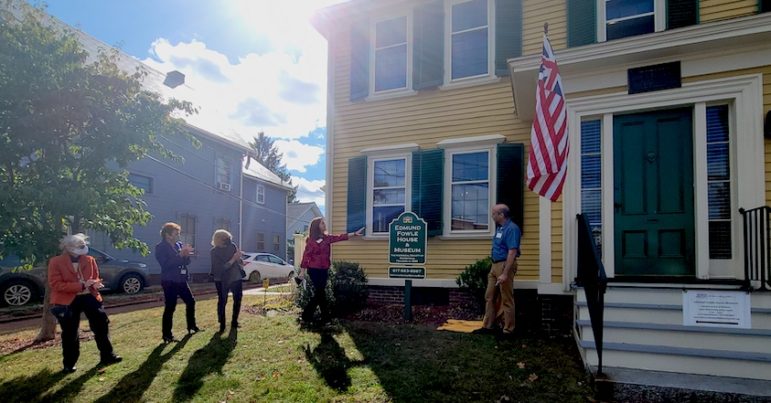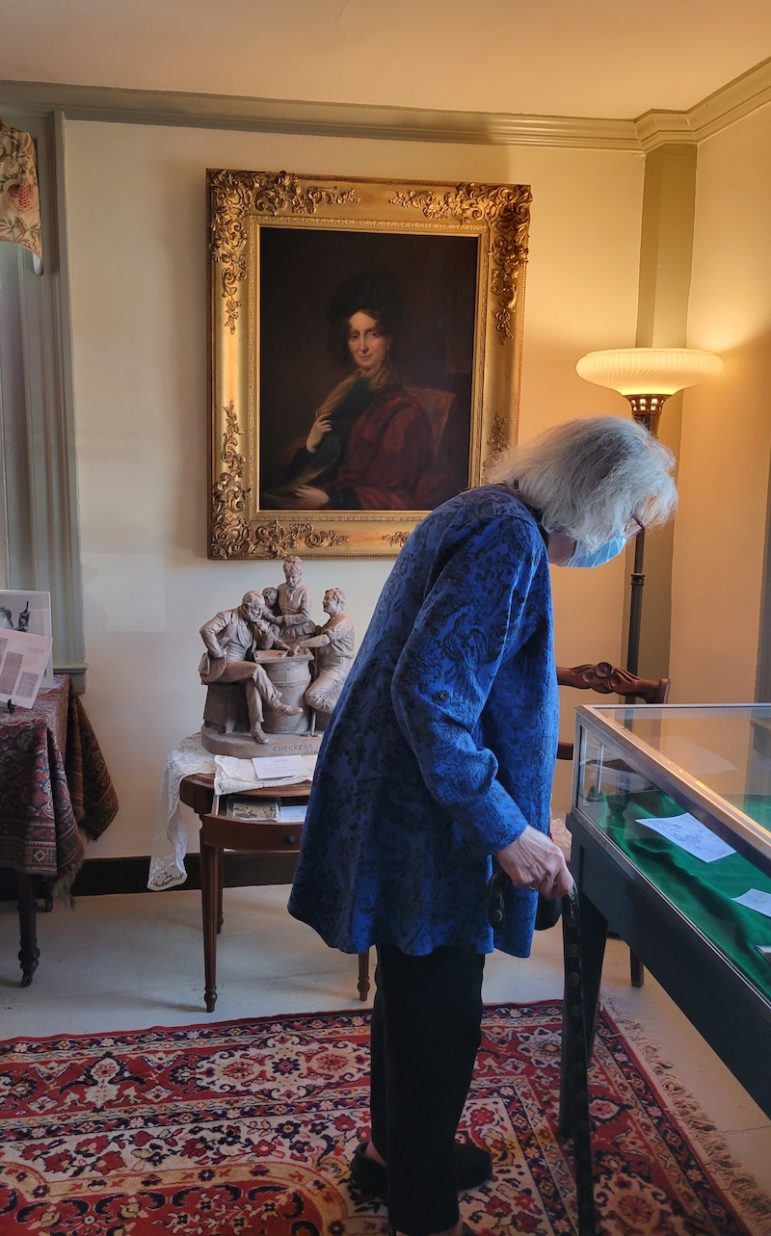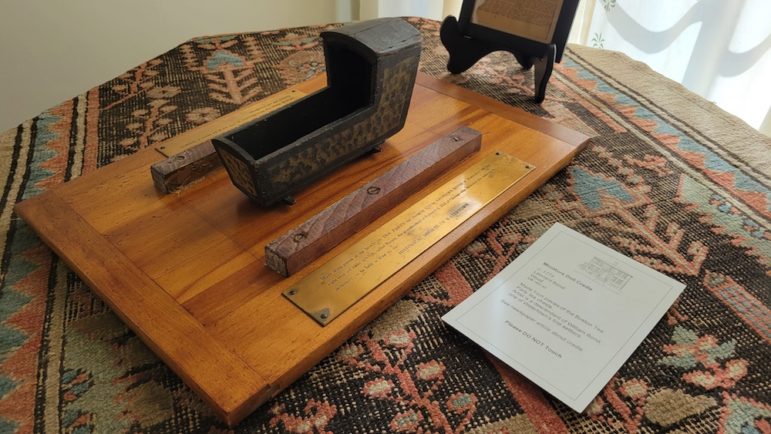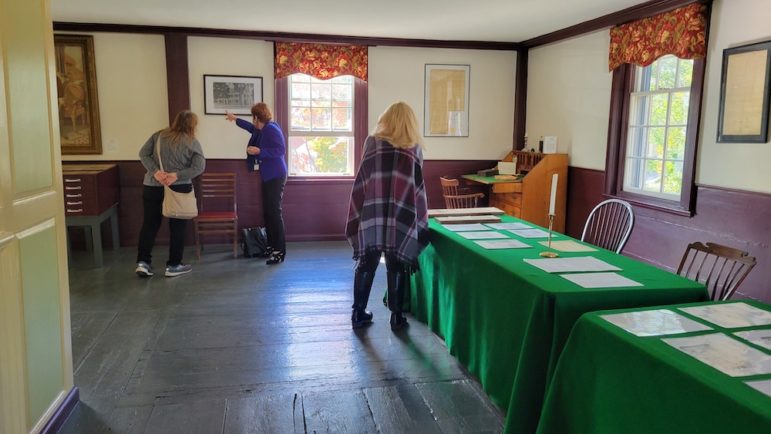
Charlie Breitrose Members of the Historical Society of Watertown celebrate the official unveiling of the new sign at the Edmund Fowle House.
On Sunday, the public got a chance to look inside one of Watertown’s oldest homes for the first time since the COVID-19 shutdown in 2020, and the Historical Society celebrated the debut of a couple of new features.
A new sign sits next to the Edmund Fowle House on Marshall Street. The home is the second oldest in Watertown, after the Browne House in West Watertown, and it was the site of the signing of the first treaty signed by the United States with a foreign power, the St. John’s (a.k.a. Maliseet) and Mi’kmaq Tribes of Nova Scotia, the Treaty of Watertown, in 1776.
The Fowle House was built in 1772, and was owned first by its namesake, Edmund Fowle and his wife Mary Cook. The house was passed it on to their son Marshall Spring Fowle, said Joyce Kelly, a member of the Historical Society Board. His sister sold it to the Russell brothers who owned a celery farm in Watertown.
It was then bought by the architect Charles Brigham and his partner John Hubbard Sturgis in 1871. When they owned it, the house was moved from the corner of Marshall and Mt. Auburn Street to the current spot, about midway between Mt. Auburn and Spring streets.

Charlie Breitrose A visitor looks around the Edmund Fowle House, which reopened for the first time since the pandemic started. In the background is a painting of Rebecca Fowle, who lived in the house.

The house was turned into a two-family home, and in 1922 the house was sold to the Historical Society in 1922 by Brigham, who was a member of the Historical Society board. It continued to be a two-family home until the 1970s. In the 1980s it became the headquarters of the Historical Society, and in 2005 it underwent a major renovation to return it to how it looked when Edmund Fowle lived there.
Board member Todd Rivers said he has already heard good feedback about the sign.
“We had a table at the Watertown Arts Market, the Faire on the Square and the Farmer’s Market and I heard from a number of people who said, ‘I knew the House was on Marshall Street but I didn’t know where it was until you had the sign,” Rivers said.
The sign is green and yellow, and matches the colors of the Fowle House. It also has a picture of the house on the sign, which was the idea of Jeff Cronin, the owner of Cronin Signs, which made the sign, Rivers said.
Charlie Breitrose
One of the artifacts inside the Fowle House is the toy crib made from pieces of the boxes thrown into the Boston Harbor during the Boston Tea Party.
The idea for the sign was first brought up years ago, before River was on the Board. When the idea resurfaced in 2018, Rivers offered to help. The Historical Society got approval from the Historic District Commission, and raised money for the project.
On Sunday, the Historical Society finally got to celebrate the new sign with the public, as well as the other new feature: labels inside the house describing the many paintings and historical objects inside the Fowle House.
The descriptive signage was paid for with a grant from the Watertown Community Foundation, said Kelly, who wrote up the descriptions.
“We have a sheet that was made up when the house opened (as a museum),” Kelly said. “We made the sheet so when you were asked about something by a visitor you could go to the cheat sheet.”
Charlie Breitrose
The second floor of the Edmund Fowle House was where the Treaty of Watertown was signed in 1776.
Among the items inside the Fowle House are portraits of Rebecca Fowle (Edmund’s daugther) and her husband Joseph Putnam Bradlee, and objects, including fireplace irons that used to be inside the Watertown Library, and a toy crib made from wood that came from the boxes thrown into the Boston Harbor during the Boston Tea Party.
Now visitors can find out more about the objects without the cheat sheet by reading the labels. The signs can also be removed, Kelly said, in case they want to have a special exhibit, or some other reason why the object might be moved around.
The Edmund Fowle House, 28 Marshall St., is open to the public on the third Sunday of the month from 1-4 p.m.